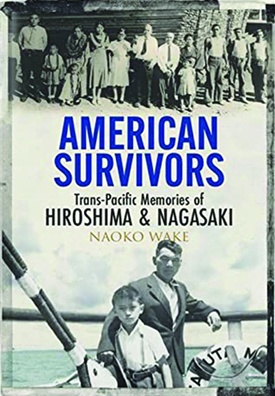In 1974, Betty Mitson and I co-edited a modest and virtually self-published and crudely fabricated book titled Voices Long Silent: An Oral Inquiry into the Japanese American Evacuation. It was conceived and developed as a way to open up discussion about a World War II event that had heretofore largely been muted by the general U.S. public and even the Japanese American community: the Nikkei’s wholesale and unjust eviction by the U.S. government from their predominantly West Coast homes and subsequent incarceration in inland concentration camps. The principal methodology we used in this pioneering book was oral history interviews, mostly ones conducted with victims of Executive Order 9066, an action that embodied President Franklin Roosevelt’s brazen disregard for the civil liberties and human rights of Americans of Japanese ancestry.
Now, almost a half-century later, a Japan-born and raised Michigan State University historian, Naoko Wake, has turned a spotlight, via her exceedingly brilliant, voluminous and prestigious Cambridge University Press book, on another previously marginalized topic pertinent to the World War II experience of Americans of Japanese ancestry. It is that of the American survivors of the 1945 atomic bombings of the Japanese cities of Hiroshima and Nagasaki.
In addition, she makes clear in her introduction that, in the absence of a research archive devoted to this subject, much of her “inquiry into the U.S. hibakusha relies on oral history interviews that I [86 altogether, two-thirds with women] and a handful of others have conducted [a total of 46] with [a rapidly diminishing number of] U.S. survivors, their family members, community supporters, and physicians in Japan and America” (p. 13).
Framed by a helpful stage-setting introduction and an epilogue that looks both backward and forward, American Survivors consists of six chapters, chronologically ordered, with the common core for each being “the remembering of the bomb derived from the oral histories” (p. 20). Chapter 1 describes Hiroshima and Nagasaki as historically “immigrant cities” whose World War II populations included many Japanese Americans and colonized Koreans, all with layered memories connecting them to their respective homelands. Chapter 2 examines how these memories shaped the response of hibakusha to the catastrophe that beset them in August 1945 in Hiroshima and Nagasaki.
Chapters 3 and 4 focus on how, culturally, Japanese American hibakusha recoupled with their families in the 15 years after 1945, first in Japan and then, post 1947, after their return to the United States mainland (preponderantly California) and Hawai‘i. Chapters 5 and 6 examine how in the 1960s-1980s era the 1980s hibakusha forged a collective identity as survivors by working in tandem with Asian American civil rights activists, chiefly women (even though the hibakusha fell far short of gaining the public acknowledgment and redress perquisites accorded World War II Japanese American concentration camp inmates).
American Survivors ranks among the very best books I have encountered over my half-century of historical inquiry into the World War II Japanese American experience, most of which has been fueled by the methodology of oral history. It is, however, a difficult volume to assess in a compact review.
In reading it and trying to fathom it, I found myself relying on three very helpful Internet sources. The first two were interviews with Wake, Asian American History 101: Interview of Professor Wake on American Survivors of Hiroshima and Nagasaki on Apple Podcasts, New Books in Japanese Studies: Naoko Wake, American Survivors: Trans-Pacific Memories of Hiroshima and Nagasaki (Cambridge UP, 2021) on Apple Podcasts. The third was 10 of Wake’s interviews relative to American survivors, ddr-densho-1021 — “Naoko Wake Collection of Oral Histories of US Survivors of the Atomic Bombs” | Densho Digital Repository. I highly recommend these sources to readers of this review.
AMERICAN SURVIVORS: TRANS-PACIFIC MEMORIES OF HIROSHIMA & NAGASAKI
By Naoko Wake
(New York: Cambridge University Press, 2021, 408 pp., $29.95, hard cover)
*This article was originally published in the Nichi Bei Weekly on July 21, 2022.
© 2022 Arthur A. Hansen / Nichi Bei Weekly








